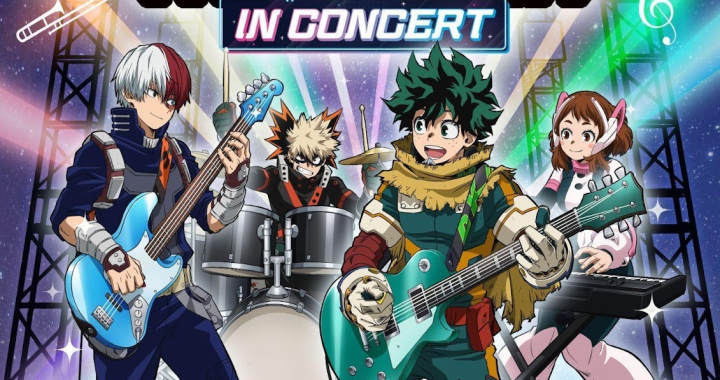
OUTSIDE THE PANELS #8: FIGURING OUT YOUR STORY AS A COMIC WRITER
Last week, on Outside the Panels #7, I wrote about finding time to write comics. This week, I want to write about deciding what your comic should be about because I feel that, while there are plenty of “how to”“ books on writing comics, I can“t recall any of them helping creators figure out what they should write about.
Real quick, Ibai Canales and I have been working on a new project. We are currently working on building the world and the characters, which is probably the most crucial part –next to execution– of a project. In doing this I started thinking about writing this piece. When it comes to creator-owned projects I feel that I only will do the project if, A:it intrigues me and my artist, and B: if I feel that there is a place for it in the comics market that is currently void. I“ll go in depth on that project as it becomes more of a reality.
Okay”¦
When you are a comic writer –or any type of writer– and you are trying to figure out what your next project should be there are a lot of things to take into consideration. Personally, I believe that a story should always have meaning behind it. I also believe that you need characters that people care about and you need to put those characters into situations that will test them and potentially alter who they are. That is stuff that goes without saying, but I want to lay it all on the table. You can“t just write something where a bunch of crap happens”¦ Because”¦ that“s not a story, that would just be a series of events.
My Kickstarter project launching on May 31st is titled, SOUL MEN, and while on the surface it is a horror/comedy story about a guy and the ghost of his brother working together to bring lost and reluctant souls to heaven or hell”¦ the story is really about sacrifice, finding one“s self and the bond brothers share. Those themes have been seen time and time again in the world of entertainment, so it is up to us as creators to make this story unique and entertaining in their own way.
Here are question I think a comic writer should answer in order to produce the best story they could produce:
What genre do I want to write?
Where does my story take place? Will it be in the current world we live in, the past, or will I have to build a new world from scratch?
Will it be a one-shot, mini-series, ongoing series or webcomic?
What are the themes of my story?
How many characters do I need to tell my story?
What perspective will my story be told through?
How will the story end?
The best thing I could do is relate this to myself, mainly because I know my own decisions and thought process. Right now, on the project Ibai and I are concepting, this story actually started with the idea of a team. From the idea of a team came the decision of what kind of world will I put this team in. After my main characters and and world questions were answered it was then time to decide what will happen to our characters. Again, that is the most important thing.
It“s easy to create a character, it really is. Figure out their personality, figure out what they look like, where they are from, and what is the number one thing in life they want. What makes your character happy, sad, mad, glad, satisfied? Only you can tell us their purpose for existing.The hard part is getting readers to care about the character you have created. One thing I do that helps me create a character readers care about a character is deciding their personality. There are only so many personalities to go around in story”¦ actually, in life. So odds are if I create a character with a certain personality readers are going to either have a similar personality or at the very least know someone with a similar personality. Luckily for writers there will be more than one person reading your work”¦ hopefuly. That increases your odds of readers finding a connection to your characters. After a connection is established good writing should build a relationship with your readers and your characters. Eventually, when you think the time is right, is when you take something away from said character and make your character react to losing whatever it was that you decided to take from them. THAT is when you test the emotional investment of your readers to your characters. IF they react positively or negatively –doesn“t matter which way– to the character losing something you have done your job as a writer.
World Building could be tough, but what I always tend to do is take my favorite part of worlds I have seen in comics, movies and TV, and put them into my own giant world that fits the story I want to tell. The most well-known creation of the world is either the worlds we have seen in the Star Wars and Lord of The Rings franchises. You probably just got a quick glimpse of both worlds when you read the last sentence. It“s because they were done as perfect as humanly known. However, always remember that a built world is nothing without characters.
As far as characters go, my trick is take people that I know and insert their personalities and wants into characters in my comics. It“s much easier than creating a characters from scratch. And, in a way, it is much more organic. You want your characters to feel real, so what better way to do that than by making cranky Uncle Johnny and his huge mansion a gigantic cranky ogre living in and protecting a cave full of riches? Everyone you ever meet, whether a family, friend, work colleague, friend from school, or even stranger at the mall, should be a potential character in one of your stories.
One last trick I have for budding comic writers is this”¦ Let your artist figure out what they characters look like!! If you are working on a comic and know what a few main characters need to look like that“s fine, but please, for the sake of your collaboration, let your artist design the characters based on the personality description you gave them. Odds are your artist will come up with something better than you. Why? Because they are the freaking artist of the team! Hahahahahahaha! No seriously, trust your artist to do their job. I have never given more than a personality description and a species/race to any of my artists and they have always delivered character designs that I absolutely love for the description I came up with. Let your artist breathe and they will love to work with you. IF you nit-pick at every little thing as far as the art goes –I promise you may just be spending more time looking for a new artist than you will be writing.
You“re a writer, right? So do yourself a favor”¦ Write! Spend more time writing the story than building a world or a character. The two tricks I just wrote in regards to World Building and Character Developing should allow you to build a world faster and develop the foundation of your characters easier.
I really hope all of this helps! Time for me to get back to writing scripts!
Good Luck!
Sal Brucculeri
@SalveyB, cunexttues.com, soulmen.launchrock.com, salbrucculeri.com, aa88press.com
Author Profile
- Sal Brucculeri is comic book creator, writer, and editor with an passionate determination to create quality comic books. Sal currently publishes a successful weekly webcomic, C U Next Tuesday, featuring the Bride of Frankenstein’s Monster. He is also the editor of The Devil You Know. Sal is also the writer of the successful Kickstarter project, Ninja Baseball Man, Vol. 1. In addition, Sal, along with Frank Mula, is the co-founder of the small-press publishing company, AA88 Press.
Websites: cunexttues.com, aa88press.com, salbrucculeri.com
Latest entries
 ColumnsMarch 7, 2016CREATOR SPOTLIGHT: CULLEN BUNN
ColumnsMarch 7, 2016CREATOR SPOTLIGHT: CULLEN BUNN ColumnsJanuary 26, 2016Sal Chats with IDW Managing Editor, David Hedgecock
ColumnsJanuary 26, 2016Sal Chats with IDW Managing Editor, David Hedgecock Comic BooksNovember 1, 2015REVIEW: NY Comic Con 2015
Comic BooksNovember 1, 2015REVIEW: NY Comic Con 2015 ColumnsOctober 13, 2015OUTSIDE THE PANELS #17: THE TRUTH ABOUT KICKSTARTER
ColumnsOctober 13, 2015OUTSIDE THE PANELS #17: THE TRUTH ABOUT KICKSTARTER










